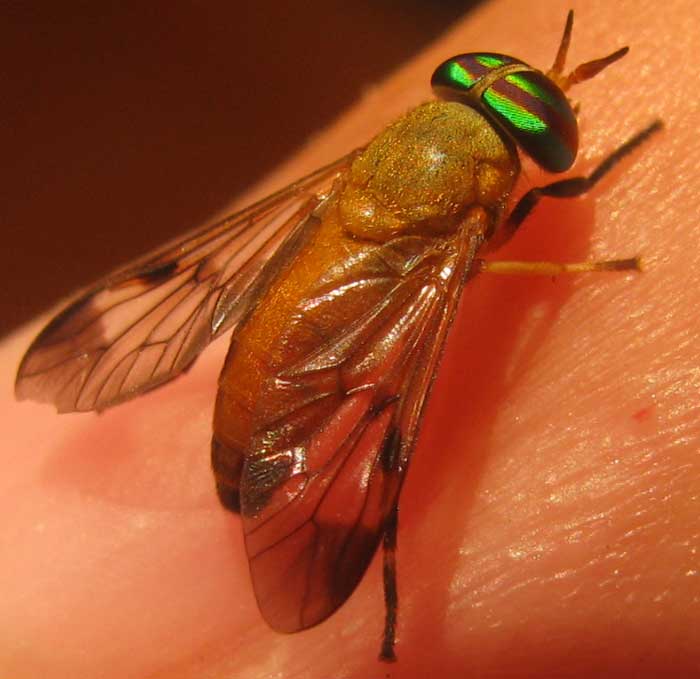Excerpts from Jim Conrad's
Naturalist Newsletter

from the June 12, 2011 Newsletter issued from Mayan Beach Garden Inn 20 kms north of Mahahual; Caribbean coastal beach and mangroves, ~N18.89°, ~W87.64°, Quintana Roo state, MÉXICO
YELLOW FLIES
Several times I've mentioned our biting flies. They're small, about 3/8ths of an inch long (1cm), yellowish, and if you settle anyplace for long -- except on the beach where wind keeps them down -- they head straight for you, especially your lower legs. They hurt, too, sometimes leaving blood trickling down your legs. If they bite a finger or toe, for awhile the appendage may swell, stiffen and itch. You can see one at work on the tender skin right below one of my fingernails at the top of this page.
Up North we call small, biting flies with black markings on their wings deerflies (genus Chrysops), while much larger flies with clear wings are horseflies (genus Tabanus). Our little biting fly belongs to the Horsefly/Deerfly Family, the Tabanidae, but is placed into a completely different genus, Diachlorus, of which about 23 species occur in the American tropics. Of these 23, one species is especially abundant and widespread, so I'm figuring that that's ours -- DIACHLORUS FERRUGATUS. In English often it's known as the Yellow Fly, though Belize's Creole speakers call it Doctor Fly. The species is found from New Jersey to Texas south through Mexico to Costa Rica.
As with mosquitoes, it's the female who bites. Both sexes eat flower pollen and nectar for energy, but the female needs blood for her eggs to develop. Biting is especially bad near water and trees. I've found insect repellent to be of a little use, but not for long. In areas with lots of them, experts suggest gloves and headnets.